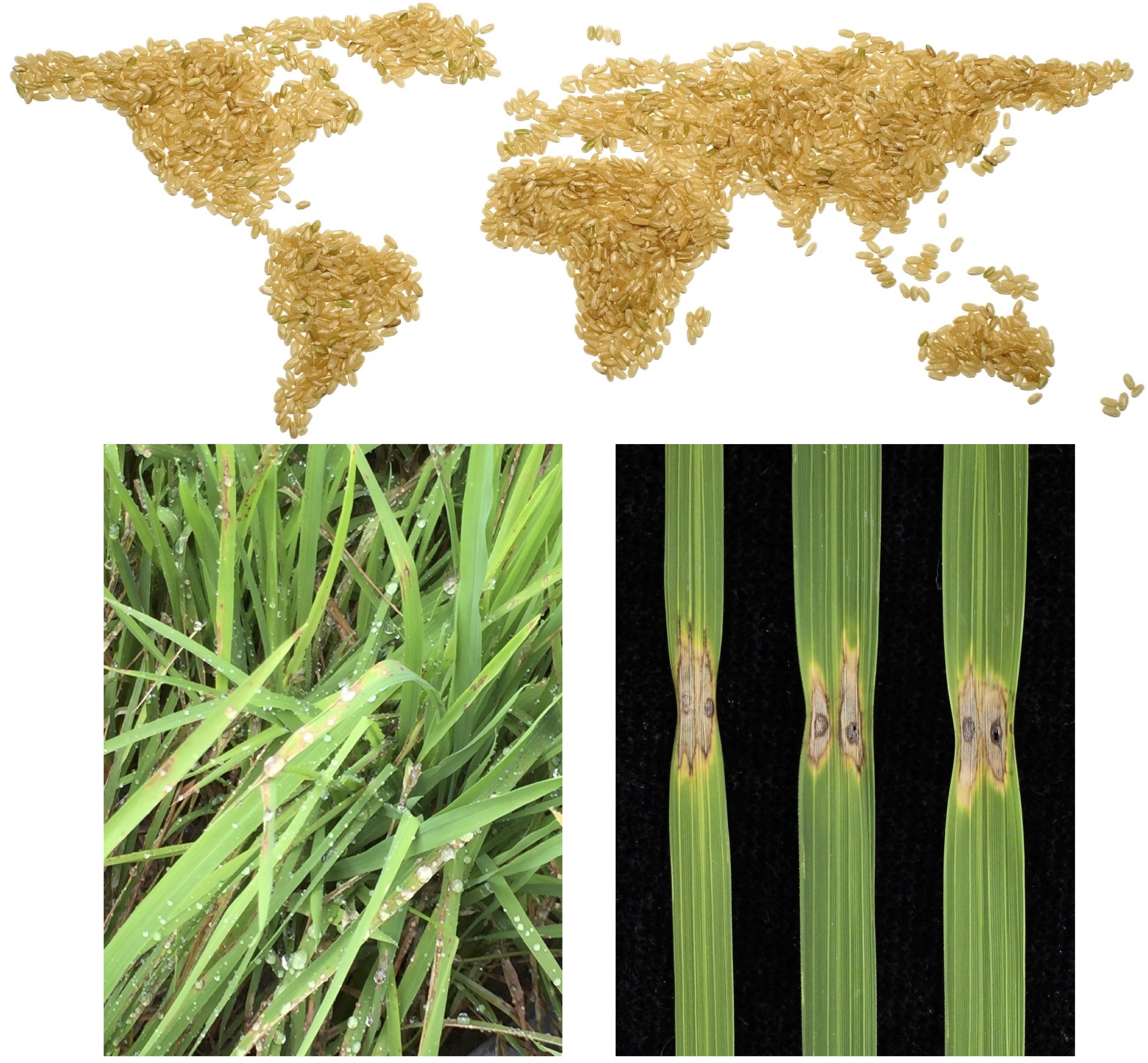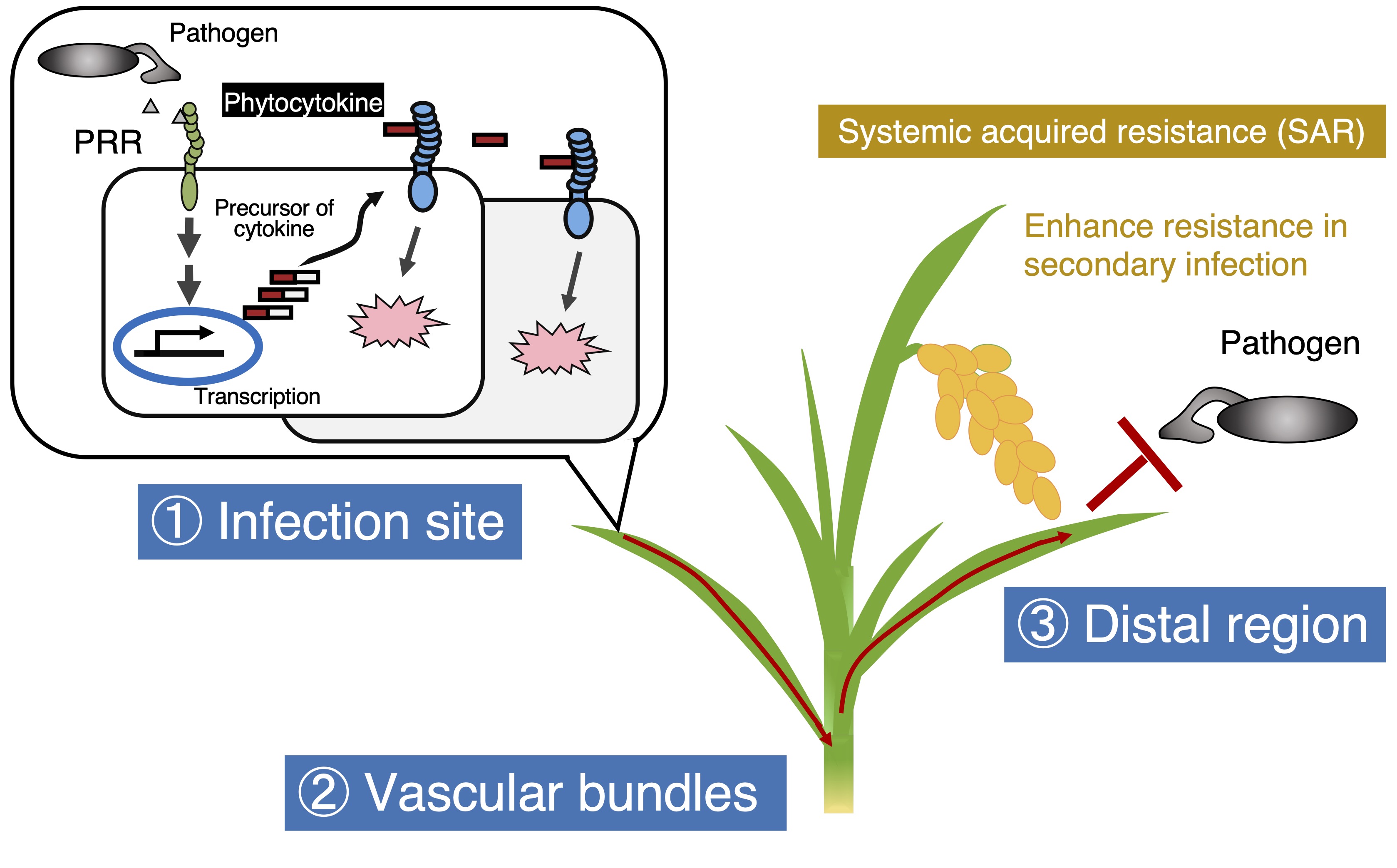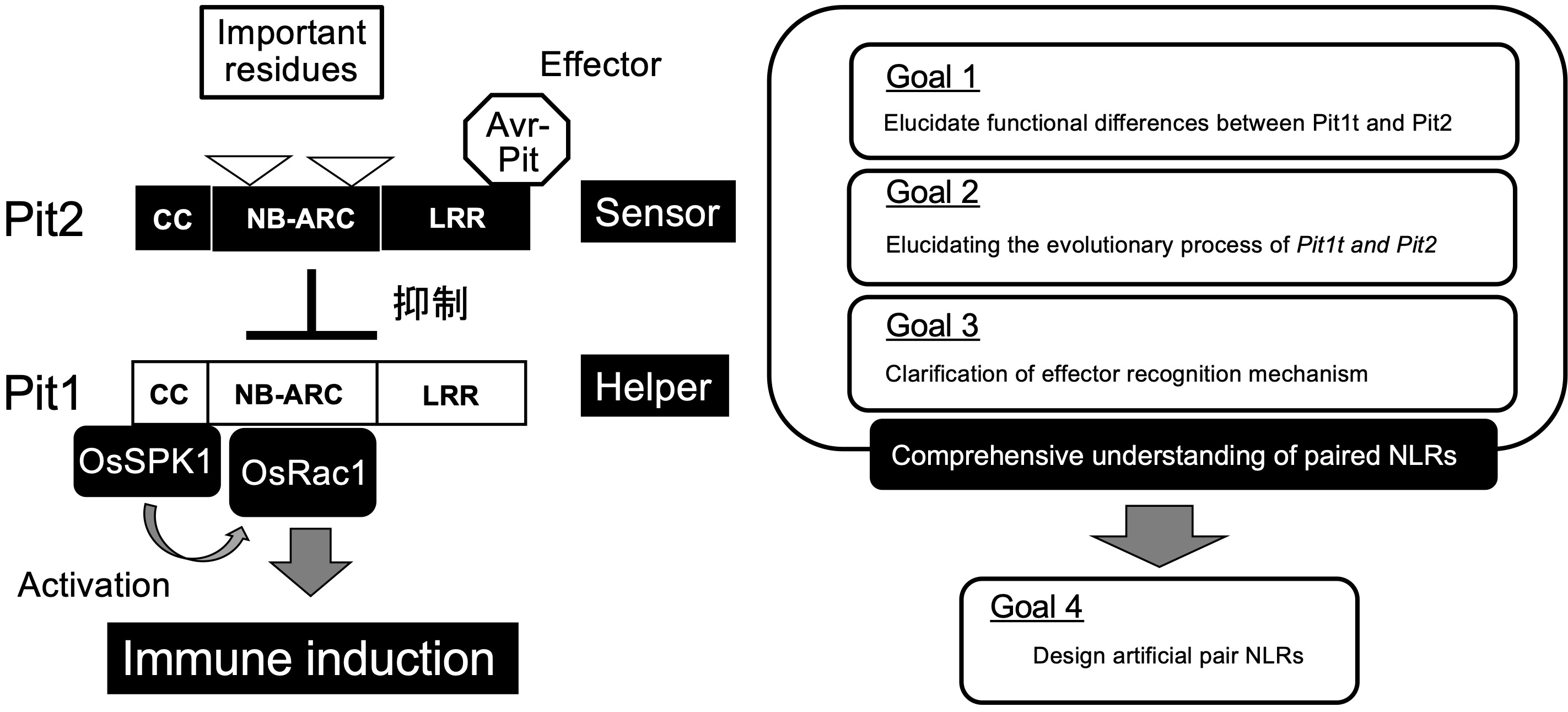Plant-Pathogen Interactions

Rice is the world’s most important crop, and improving rice is an important research challenge. Our ultimate goal is to design new rice varieties that exhibit resilience against abiotic stresses while augmenting essential agronomic traits. To achieve this ambitious goal, we investigate immunoreceptors and the small G protein OsRac1, both of which play pivotal roles in rice immunity. We firmly believe that we can successfully engineer a robust rice immune system by acquiring a comprehensive understanding of the functions performed by immunoreceptors and OsRac1.
 |
|
|---|
 Plants possess a clever mechanism for regulating their own immunity through the secretion of endogenous hormonal peptides known as phytocytokines, which play a vital role in developing immune resilience. Through extensive multi-omics analysis, we have recently identified several potential candidates of rice phytocytokines. By leveraging the molecular foundation provided by these rice phytocytokines, our aim is to delve into a comprehensive exploration of the robustness of plant immunity.
Plants possess a clever mechanism for regulating their own immunity through the secretion of endogenous hormonal peptides known as phytocytokines, which play a vital role in developing immune resilience. Through extensive multi-omics analysis, we have recently identified several potential candidates of rice phytocytokines. By leveraging the molecular foundation provided by these rice phytocytokines, our aim is to delve into a comprehensive exploration of the robustness of plant immunity.
 Numerous “paired NLR proteins” have been identified, wherein two distinct NLR-type immune receptors collaborate to recognize pathogen effectors and activate immune responses. It is evident that these proteins play a vital role in the plant immune system. This study aims to elucidate the evolutionary mechanism underlying the emergence of paired NLR proteins by examining the two crucial residues, Pit1 and Pit2, responsible for determining their fate.
Numerous “paired NLR proteins” have been identified, wherein two distinct NLR-type immune receptors collaborate to recognize pathogen effectors and activate immune responses. It is evident that these proteins play a vital role in the plant immune system. This study aims to elucidate the evolutionary mechanism underlying the emergence of paired NLR proteins by examining the two crucial residues, Pit1 and Pit2, responsible for determining their fate.
